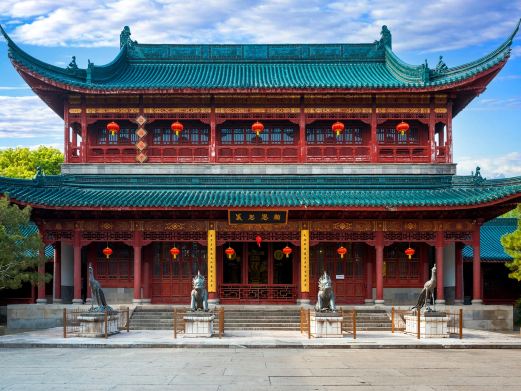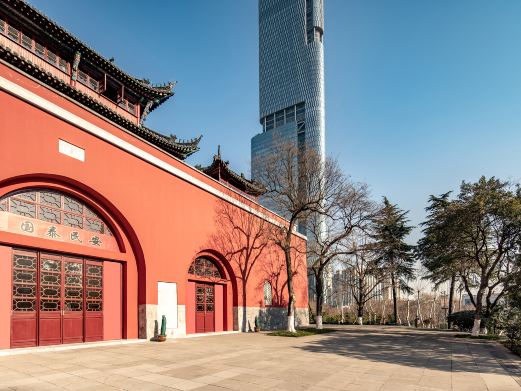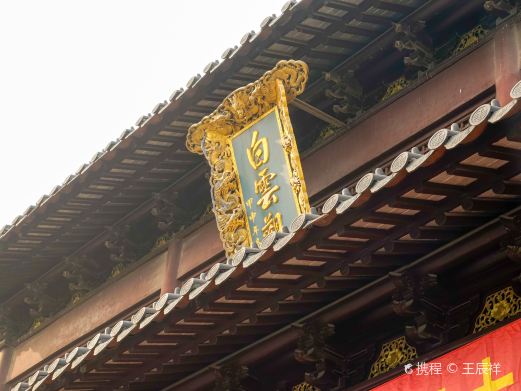It is said that Chuishan Mountain was originally named Ruishan Mountain. When Emperor Qin Shihuang made an inspection tour to the east and passed by here, he saw auspicious qi rising and a kingly aura. He decreed that the ‘king’ on the left side of the character ‘rui’ be removed and the remaining ‘duan’ be framed with a ‘frame’ to prevent the kingly aura from leaking out and endangering his eternal empire. Thus, this mountain was named ‘Chuishan Mountain’. Chuishan Mountain has deep valleys and secluded ravines, jagged rocks, towering ancient trees, and swaying bamboo forests. There are 36 cliffs and 72 perilous slopes on the mountain. Every step presents a different scene and has always been a place for Buddhists to practice. In its heyday, there were dozens of nunneries here. Currently, there are Xilin Temple, Dongxia Temple, Shaolong Temple, and Lengyan Zen Temple. Pilgrims and believers come in an endless stream all year round. The Yangtze River’s first tower, the Baotian Tower, soars into the sky. It is enchanting and makes people linger. Chuishan Mountain guards the Yangtze River’s defenses and is also the gateway to Zhenjiang and Nanjing. In the Tang Dynasty, there was a Qiushan Garrison (namely Zhenhai Army) here. In the Song Dynasty, the Chuishan Stockade was built. General Han Shizhong stationed troops here to resist the Jin Dynasty. In the Ming Dynasty, it was a place to resist Japanese pirates. In 1842, when the British invaders launched the Battle of the Yangtze River, the defenders of the Chuishan Fort bravely fought the enemy and scared the invaders out of their wits.
Opening hours: Open all year round and all day.
Chuishan Mountain
It is said that Chuishan Mountain was originally named Ruishan Mountain. When Emperor Qin Shihuang m[...]









